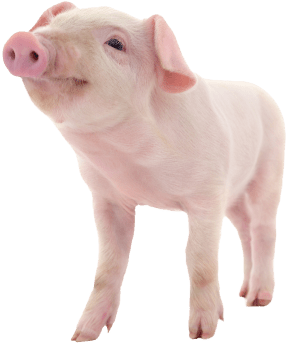
Exploring the Advantages of Swine Cup Watering Systems
|
|
Time to read 3 min
 You are being redirected to QC Supply Pharmacy, where you’ll find a wide selection of high-quality prescription and pharmaceutical products for animals of all sizes.
Enjoy the same great service and expertise you trust from QC Supply.
Click below to continue shopping.
Continue
No thanks, stay on the main site
Powered by
You are being redirected to QC Supply Pharmacy, where you’ll find a wide selection of high-quality prescription and pharmaceutical products for animals of all sizes.
Enjoy the same great service and expertise you trust from QC Supply.
Click below to continue shopping.
Continue
No thanks, stay on the main site
Powered by


|
|
Time to read 3 min
Smart producers are always on the lookout for ways to reduce costs, increase profits, and run their operation more efficiently. For commercial swine producers, a cup watering system (a type of efficient swine watering system) can be a way to realize significant savings in a variety of areas. Because of their unique design, hog cup waterers (often used in water-saving livestock equipment setups) have been shown to cause less water waste compared with nipple systems. Reduced water waste has a trickle-down effect: less water waste will likely result in a lower water bill; a lower manure slurry volume to manage; and more effective medication administration.
Cup waterers drastically reduce the amount of wasted water compared with nipple drinkers because all the water released from the nipple falls into the cup for the animal to drink. Because water only flows into the cup, animals are much less likely to activate nipples/levers recreationally or accidentally to wet heads and/or bodies. Any water that falls from the pig’s mouth will also be contained in the cup.
Though cup systems obviously conserve water, there is the chance that the animal will then consume dirty water—with saliva or feed in it—which may be a cause for concern for some producers. The good news is that no studies have shown a dip in pig performance due to the type of waterer used.
Additionally, cup waterers typically make use of the same water line and mounting hardware as nipple drinkers. As a retrofit choice, their ease of installation makes cup waterers an attractive alternative for those looking to change out their old waterer systems for a cup system. This is often considered one of the best waterers for hog farms, especially for those wondering how to reduce water waste in swine production when comparing cup vs nipple drinkers.
The water-saving qualities of cup watering systems has a valuable trickle-down effect for producers. In slatted swine facilities, where manure typically falls into a pit, any water waste will also fall into the pit. While wasted water might not be as problematic for small producers, commercial producers can be presented with significant manure management difficulties. Water dilutes the nutrient value of manure and increases its volume. When water waste is minimized, stored manure can have a dry matter concentration as high as 8-10 percent. With nipple drinkers, dry matter concentration is around 3-4 percent.
This means there will be more manure to haul and the nutrients will be less concentrated. Considering the costs associated with manure hauling and application, more manure means greater transportation expense. Cup drinkers can help reduce the added hauling and application costs associated with nipple drinkers because cup-watering systems are as much as 25% more efficient in finisher productions and up to 31 percent in nursery phase productions. In short, using a manure management system for swine that includes swine cup watering system technology leads to swine water waste reduction and lower overall costs.
This same basic premise applies to medication and vaccine administration. Drug and vaccine costs can be reduced with the use of cup watering systems for water-administered products. When herds are medicated by proportioners, water waste means medication waste. One study reported a 50% reduction in medication costs when sulfadimethoxine was administered in drinking water in a cup system compared to a swinging nipple drinker over a four-day period.
This all adds up to more producer control. With cup waterer systems, producers can be more certain that livestock are not only getting the proper levels of medications, but that their overall water consumption is more efficient and, therefore, more cost-effective. In commercial operations where so much is subject to fluctuating markets, producers can rest a little easier knowing their livestock are not needlessly wasting resources and driving up expenses. This medication efficiency in swine production is another reason many producers view cup waterers as an affordable swine watering system option.
While there are many waterer systems products out there for producers to select from, a little research will show that cup watering systems not only reduce water waste—which is a savings in and of itself—but will cut back on manure slurry volumes and associated costs, and be a more effective delivery system for medications and vaccines compared with nipple and swing drinkers.
Also, don't miss the opportunity to check our guide on how to properly water your pigs.
Did you convert from nipple to cup waterers? Tell us your experience in the comments section!